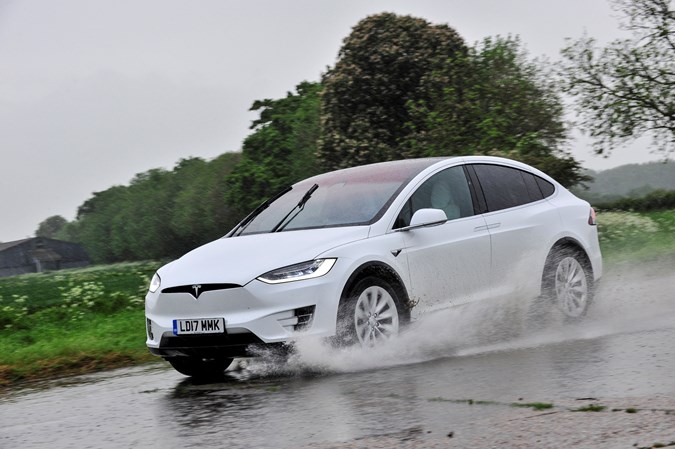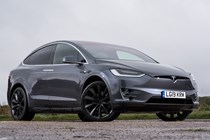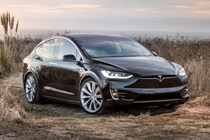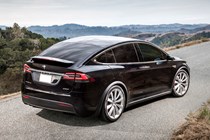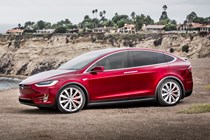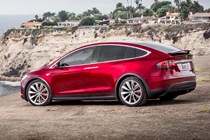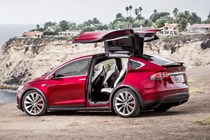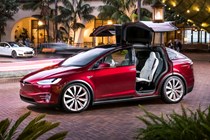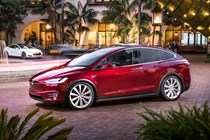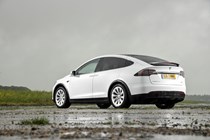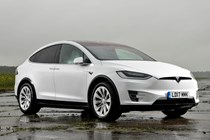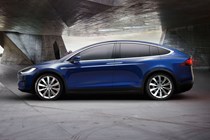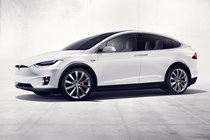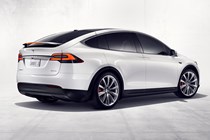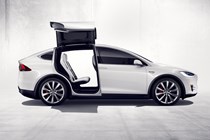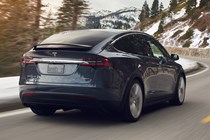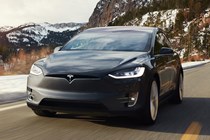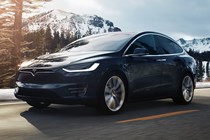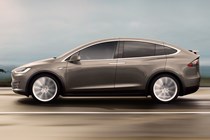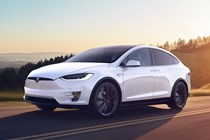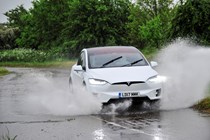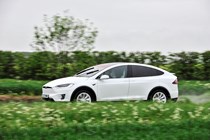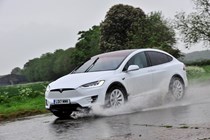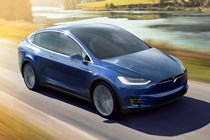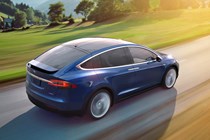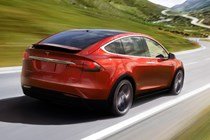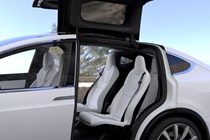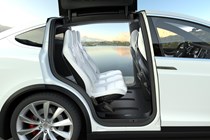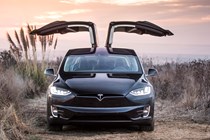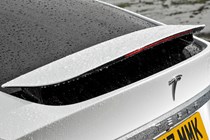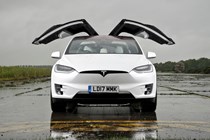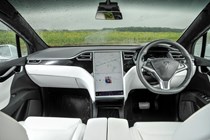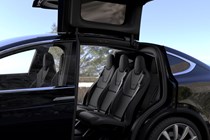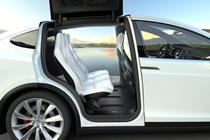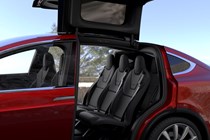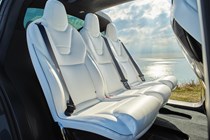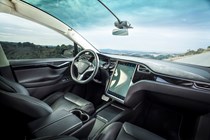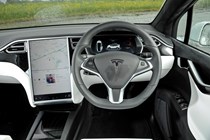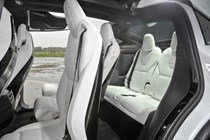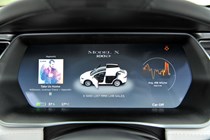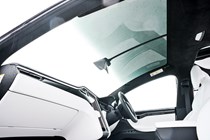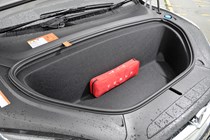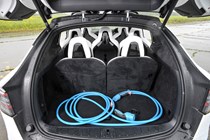Tesla Model X engines, drive and performance
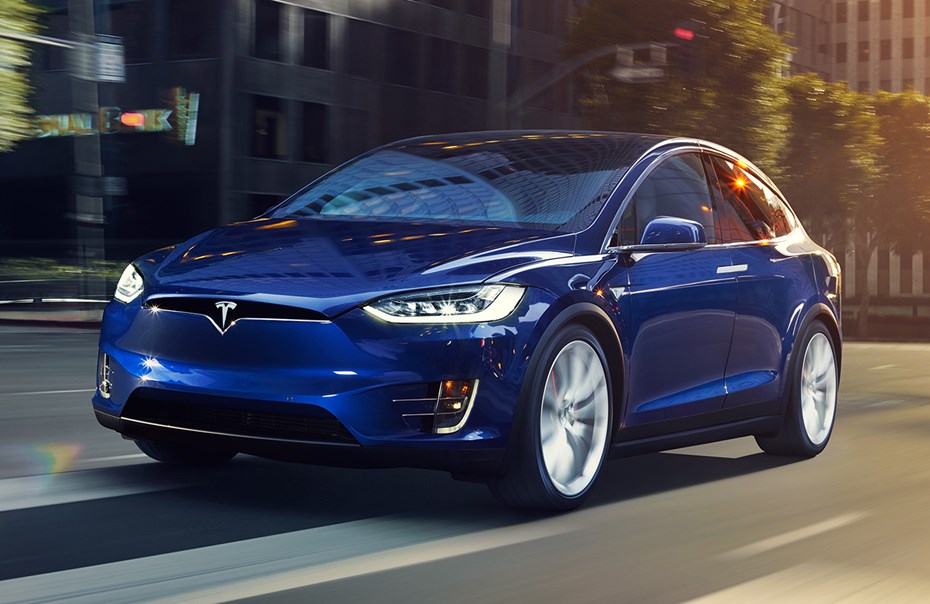
- Stunning acceleration off the line
- No gears mean uninterrupted oomph
- Less punchy than a Model S, but still fast
Tesla simplified the Model X considerably in 2019, replacing the previously employed system of numbers and letters with two versions: regular and Plaid. Both have all-wheel drive as standard, with the former getting two motors and the latter three to give 1020hp.
Long Range is the less expensive of the two (but still costs north of £80,000), with an electronically governed top speed of 155mph and a 0-60mph acceleration time of 3.8 seconds. Using the latest WLTP testing measures better designed to replicate real-world use, it has a claimed range of 348 miles. It feels mightily quick, and even though its the slower of the two current models, it will easily outdrag most sports cars, making overtaking manoeuvres especially satisfying. Yet, because its electric and virtually vibration-free, at slow speeds its serene and relaxing, with a very easy to modulate accelerator.
Topping the range is the aptly titled Performance, which includes the infamous Plaid Mode. Top speed is again 155mph, but that 0-60mph dash has been slashed to a barely believable 2.5 seconds. It is, quite simply, one of the fastest-accelerating cars on sale. That extra zip means the official claimed range is reduced a little to a still-impressive 333 miles.
Owners were treated to an over-the-air software update in April 2020, bringing more power for Performance models. This means faster sprinting off the line and better repeatability, so you can accelerate from a standstill more times in a row without the car’s power fading.
As well as more horsepower, Model X owners were also benefitted from a simpler to use user interface for activating Ludicrous+ mode (the fastest way to get a Tesla off the line) and a clever new ‘Cheetah Stance’ function. This drops the ride height of the front wheels when launch control is activated.
Previously available Model Xs
The Model X’s twin electric motors deliver maximum performance to the front and rear wheels from the moment you accelerate. We tested an older P90D, which promises 0-60mph in 4.8 seconds, with a battery range of 303 miles.
If anything, the 0-62mph figure undersells the immediate, relentless nature of the acceleration, which slams you back in your seat and – because there are no gears to change – is entirely linear and uninterrupted.
The 75D promises 0-62mph in 6.0 seconds (259 miles range), and while the 100D also records the same 4.8 seconds as the 90D, the range increases to 351 miles. Buyers can step up to the P100D, which includes the Ludicrous Speed Upgrade. It promises an astonishing 2.9-second 0-60mph time and takes just 1.4 seconds to accelerate from 45-65mph, with a range of 336 miles, assuming it’s being driven gently.
Ultimately, the 90D’s performance is more than adequate, with very strong acceleration even at high motorway cruising speeds, and excellent mid-range flexibility for safe overtaking.
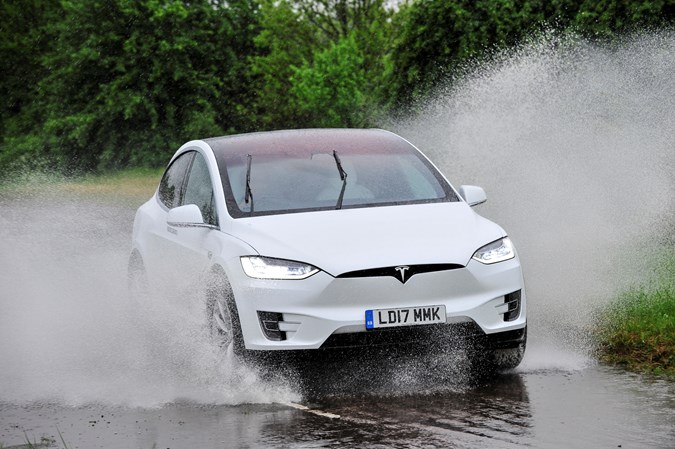
All models are capable of 155mph, except the entry-level 75D, with a maximum of 130mph.
Regenerative braking helps to restore some battery charge, by capturing energy usually lost as a car slows down. This means that quite small lifts off the throttle feel like braking in a normal car. The effect can feel quite unnatural at first, but is easy to acclimatise to.
Handling doesn’t set a new benchmark
- All-wheel drive traction is impressive
- Over-eager traction control cuts power too soon
- Handles well for its size, yet lags behind class leaders
Every Model X is supplied with all-wheel drive as standard equipment. It allows the powerful five-to-seven-seat SUV to deploy its power with little wheelspin, and makes for safe, sure-footed progress even in very bad weather conditions.
Despite this, hard acceleration from a T-junction can cause the traction control to cut power very abruptly, which is far from ideal when attempting to merge with fast-flowing traffic. A more measured traction control intervention would be welcome here. Similarly, when tackling a series of sweeping bends, the Model X will be keen to brake much more than is really required when you’re driving with the adaptive cruise control switched on.
The Tesla’s body roll is well-contained, which is important and impressive for a heavy car weighing approximately 2.4 tonnes. However, conventional large SUVs, such as the Audi Q7 and Range Rover Sport, feel more agile and fun to drive. They also have more satisfying steering with a greater degree of feedback – the Tesla’s lacks definition as you move it off-centre, which contributes to a slightly vague feeling.
The Model X’s steering is light and user-friendly, however, making the the Tesla easy to manoeuvre at low speeds in town, and this is not an intimidating SUV to squeeze into a tight parking spot. That’s partly because of the excellent reversing camera, which displays a high-resolution and extremely clear image on the 17-inch touchscreen.
